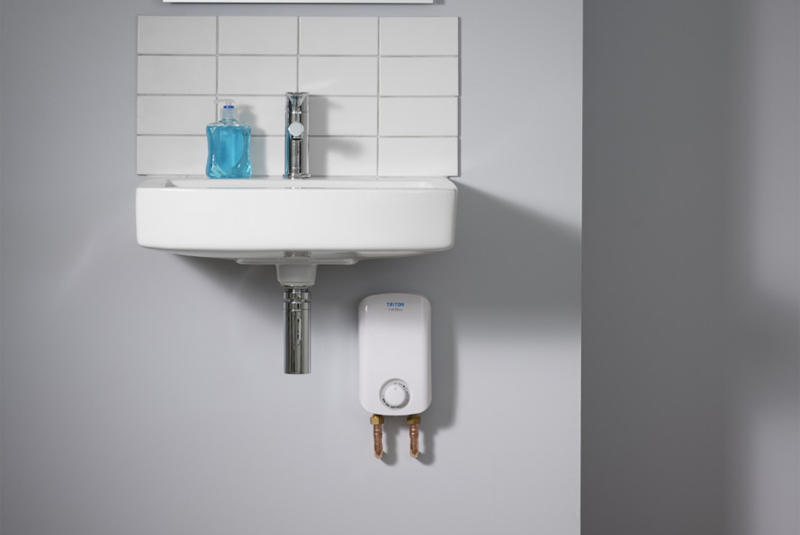
Steve Saunders, Senior Technical Manager at Triton Showers, offers five simple steps to choosing or specifying the best instantaneous hot water solution for the job.
Suitable size
One of the first questions to ask is what is the hot water requirement? If there is only one hand basin in need of hot water then a single point heater will be adequate. Alternatively, if there are two or a single kitchen sink then a multi-point option is more suitable. Both heater systems are compact so can be easily installed in a kitchen cupboard or even above/under the wash unit.
Factoring in flow rates
Always take into account the available mains water flow rate during specification, as this can affect the delivery pressure and temperature of the water. In addition, the flow can also be affected by the power level of the unit.
Appropriate water temperatures
The temperature required depends on the desired use of the unit. For example, a kitchen sink will need a higher temperature than one used solely for washing hands (maximum of 41°C). Applications such as garages and workshops however, require slightly hotter water (ideally between 46 and 48°C) in order to remove oil and grease. In all scenarios, it’s important to consider that the risk of scalding increases rapidly from the temperature of 50°C.
Also remember that the temperature from the outlet will be dependent on the mains water supply. In summer for example, it will be much warmer and therefore require less heat input than during the winter months. This is a good point to tell customers, so they know to turn the power output down during the warmer months for water and electric cost savings.
Electrical requirements
If installing a water heater with a kilowatt rating above 3kW, it is advisable to employ a qualified electrician. The consumer unit (fuse box) should be checked to ensure it has a mains switch rating of 80A or above and include a spare fuse way or Miniature Circuit Breaker (MCB). In all cases, the installation, supply cable and circuit protection must conform with BS7671 (IEE wiring regulations) and be sufficient for the amperage required.
Prime positioning
The unit should be situated as close as possible to the outlet to minimise any heat loss. As such, the recommended maximum distance between the two is 0.5 metres. It also needs to be in a vertical position and connected to its own electrical circuit. Critically, the unit should not be placed where it will be subject to freezing conditions.
For more info, click here













